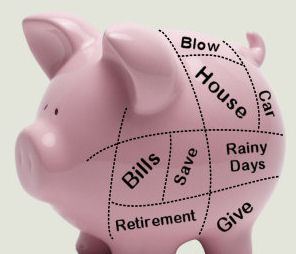A follow up from last week’s article about FBAR, the next hammer to drop is: The Foreign Account Tax Compliance Act, better known as FATCA, was passed in 2010 as part of the HIRE act. Which was supposed to start on July 1, 2014, but last week was postponed a second time until January 1, 2016, foreign financial institutions (FFI) will be required by the US government to report information regarding accounts of all US citizens – living in the US and abroad, US “persons”, green card holders and individuals holding certain US investments – to the IRS.
While the law’s full implementation m ay be postponed, it does not mean that you do not need to be compliant with the law. The postponed implementation is most likely on the part of the FFI’s than on the American citizens complying with the reporting requirements of the law. So you need to report your foreign assets.
ay be postponed, it does not mean that you do not need to be compliant with the law. The postponed implementation is most likely on the part of the FFI’s than on the American citizens complying with the reporting requirements of the law. So you need to report your foreign assets.
(A United States “person” includes U.S. citizens; U.S. residents; entities, including but not limited to, corporations, partnerships, or limited liability companies, created or organized in the United States or under the laws of the United States; and trusts or estates formed under the laws of the United States.)
This law requires foreign financial institutions such as local banks, stock brokers, hedge funds, insurance companies, trusts, etc., to report directly to the IRS all their clients who are US “persons.” FFIs that do not become compliant will be subject to a 30% withholding on their US investments when they are cashed in, which will directly impact FFI clients with US holdings.
FATCA requires financial institutions to use enhanced due diligence procedures to identify US persons who have invested in either non-US financial accounts or non-US entities. The intent behind FATCA is to keep US persons from hiding income and assets overseas. The key word here is “hiding”. Its O.K. to have assets over seas and follow that jurisdictions tax codes, but it’s not O.K. to “hide” those assets from the IRS.
The ability to align all key stakeholders, including operations, technology, risk, legal, and tax, are critical to successfully complying with FATCA. Both financial institutions and non-financial multinational corporations should consider steps such as:
- Analyzing legal entity structures and registering FFIs that are required to register
- Conducting gap analysis to identify systems and processes that must be updated
- Develop an implementation plan for the changes required for FATCA compliance
- Performing due diligence on preexisting account holders and re-mediate non-compliant accounts
- Evaluating your controls related to FATCA compliance
FATCA also requires US citizens who have foreign financial assets in excess of $50,000 to report those assets every year on a new Form 8938 (FBAR) and may be filed with the 1040 tax return. The FBAR was discussed in more detail in a previous article.
This law is in essence making all the FFI’s in the world, similar to the US Banks, unemployed, unpaid IRS agents reporting on US citizens and their companies that may do business with their FFI.
Many Americans residing overseas are reporting banking lock-out. A number of foreign financial institutions have simply chosen to eliminate the accounts of US citizens and their US companies in order to minimize their exposure to FATCA reporting requirements, withholding fees and potential penalties. This is causing a lot of problems for US citizens and their companies doing business overseas.
The US Treasury/IRS has mandated the FFI’s use their Intergovernmental Agreements (IGAs); many countries have signed on and will facilitate the transfer of information. The IGA agreements include a non-discriminatory clause that is aimed at helping alleviate issues of lock-out of banking services to US citizens and US persons. In other words these FFI’s must be compliant or they will be placed on the IRS watch list and the FFI’s dollar assets could be impacted.
Many are calling this the “end of the dollar law” as many countries around the globe are looking to find alternatives to the dollar as the reserve currency to use when trading with their neighbor countries. This is one of the most overreaching laws the US Government has ever passed. In the end it appears to be a law that is doing more damage than good. As with all laws we never know the full ramifications until it is completely implemented, but this one was an easy one to spot that it would be bad, very bad for Americans the world over.
 We all believe that our government has become so onerous that many people are leaving for other countries simply because Americans are not free anymore. A couple weeks ago I listened to David Barton speak and he said that if you “read 100 pages per day of all federal laws, seven days per week, it would only take you 25,000 years to complete the reading”. We are responsible to follow all those laws – ignorance is no excuse for breaking a law, right? Well here is another example of over-reach and being worked over by the federal government all in the name of protecting us against us. If you think you can hide your money some place, guess again…
We all believe that our government has become so onerous that many people are leaving for other countries simply because Americans are not free anymore. A couple weeks ago I listened to David Barton speak and he said that if you “read 100 pages per day of all federal laws, seven days per week, it would only take you 25,000 years to complete the reading”. We are responsible to follow all those laws – ignorance is no excuse for breaking a law, right? Well here is another example of over-reach and being worked over by the federal government all in the name of protecting us against us. If you think you can hide your money some place, guess again…




 There are two things in life that are inevitable: death and taxes, as the old saying goes. This article will discuss ways in which you can protect your family upon your death with life insurance – there it’s been said; no one likes to talk about life insurance! While this may not be a very uplifting topic for most people, it is better to plan and be prepared for the event now, than to put it off and perhaps leave your family coping with both your loss and a personal financial crisis.
There are two things in life that are inevitable: death and taxes, as the old saying goes. This article will discuss ways in which you can protect your family upon your death with life insurance – there it’s been said; no one likes to talk about life insurance! While this may not be a very uplifting topic for most people, it is better to plan and be prepared for the event now, than to put it off and perhaps leave your family coping with both your loss and a personal financial crisis.





